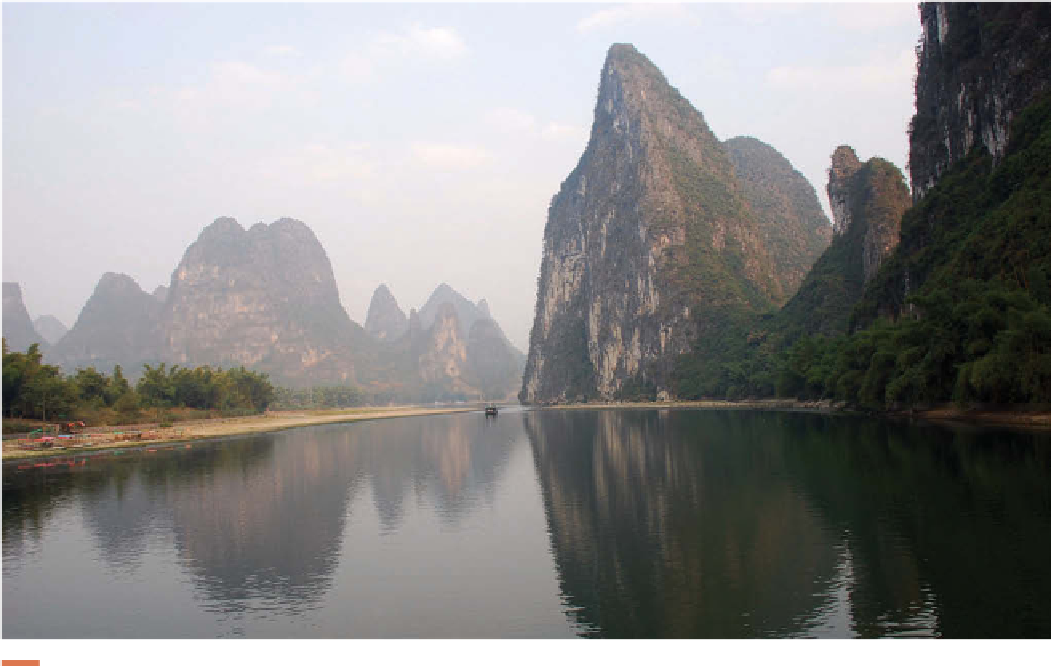Geography Reference
In-Depth Information
Figure 1.18
Guilin, China.
The South China Karst region, bisected here by the Li River outside Guilin, is an
UNESCO World Heritage Site.
© Alexander B. Murphy.
city has a surrounding region within which workers
commute, either to the downtown area or to subsidiary
centers such as offi ce parks and shopping malls. That
entire urban area, defi ned by people moving toward and
within it, is a functional region. Thus a functional
region is a spatial system; its boundaries are defi ned by
the limits of that system. Functional regions are not
necessarily culturally homogeneous; instead, the people
within the region function together politically, socially,
or economically. The city of Chicago is a functional
region, and the city itself is part of hundreds of func-
tional regions-from the State of Illinois to the seventh
federal reserve district.
Finally, regions may be primarily in the minds of
people.
Perceptual regions
are intellectual constructs
designed to help us understand the nature and distribu-
tion of phenomena in human geography. Geographers
do not agree entirely on their properties, but we do con-
cur that we all have impressions and images of various
regions and cultures. These perceptions are based on our
accumulated knowledge about such regions and cultures.
Perceptual regions are not just curiosities. How people
think about regions has infl uenced everything from daily
activity patterns to large-scale international confl ict. A
perceptual region can include people, their cultural
traits, such as dress, food, and religion; places and their
physical traits, such as mountains, plains, or coasts; and
built environments, such as windmills, barns, skyscrap-
ers, or beach houses.
But where is this Mid-Atlantic region? If Maryland
and Delaware are part of it, then eastern Pennsylvania
is, too. But where across Pennsylvania lies the boundary
of this partly cultural, partly physical region, and on
what basis can it be drawn? There is no single best
answer (Fig. 1.19).
Major news events help us create our perceptual
regions by defi ning certain countries or areas of countries
as part of a region. Before September 11, 2001, we all had
perceptions of the Middle East region. For most of us,
that region included Iraq and Iran but stretched no farther
east. As the hunt for Osama bin Laden began and the
media focused attention on the harsh rule of the Taliban
in Afghanistan, our regional perceptions of the Middle
East changed; for many, the region stretched to encom-
pass Afghanistan and Pakistan. Scholars who specialize in
this part of the globe had long studied the relationship
between parts of Southwest Asia and the traditional
“Middle East,” but the connections between Afghanistan
and Pakistan and the rest of the Middle East were almost
invisible to the general population.










































